Millions of people worldwide employ essential oils to influence mood, in their body care products, and for home health remedies. Over the last decade in particular, home use of essential oils in the U.S. has burgeoned. Essential oils and diffusers are ubiquitous online and are also found in boutiques, grocery markets, and ‘big box’ stores like Walmart. Schools and workplaces have jumped on the aromatherapy bandwagon, eager to reduce illness and to increase focus and productivity.
Complementary or “alternative” medicine has become an enormous industry. According to the National Institutes of Health’s (NIH) Center for Complementary and Integrative Health, Americans spend over $30.2 billion annually on complementary health approaches. This figure represents “9.2 percent of all out-of-pocket spending by Americans on health care and 1.1 percent of total health care spending”.
Accordingly, it makes sense that hospitals are joining the crowded arena to feature essential oils as an adjunct treatment for their patients, and aromatherapy has emerged as a popular complementary option. Reasons for this are diverse: patients in hospitals are worried and stressed. They suffer a loss of control when stripped of clothing and placed in a backless hospital gown, are confined to bed, and see a confusing whirlwind of anonymous staff coming in and out of their room. They are subjected to painful and invasive tests, and struggle to decipher “medical-speak” when doctors discuss test results.
Aware of this, hospitals look for ways to return a semblance of control to their patients. Traditional methods employ active listening, having staff introduce themselves when meeting a patient, using simple terms instead of “medical-speak” when discussing the patient’s condition, and constant re-orientating the patient to the environment.
However, these methods are often not sufficient. Unhappy patients leave negative feedback. This is a concern since patient satisfaction scores are at least partially tied to insurance reimbursement. Hospitals which accept federal funding (the overwhelming majority of US hospitals do) are required to survey and report how satisfied patients are with their hospital stay. Survey results are then reported to the Centers for Medicare and Medicaid Services, which is intimately involved in the reimbursement process. Since a large proportion of hospital admissions involve a population receiving Medicare benefits, the potential gain (or loss) of reimbursement dollars can make or break a hospital’s bottom line.
Hence, we see the emergence of complementary services as supportive therapy for patients. Hospitals are increasingly providing massage and music therapy, emotional support pet visits, reiki, and aromatherapy as adjuncts to decrease anxiety, manage stress, and (hopefully) to increase patient satisfaction scores.
Hospital-based aromatherapy programs
While essential oils are “natural”, that does not mean they are always safe to use, especially in medically fragile populations. Therefore, provision of a professional hospital-based aromatherapy program must always place patient safety first.
Institutions will preferably employ licensed professionals (nurses, massage therapists, clinical psychologists, social workers, physical and occupational therapists, etc.) or trained volunteers.
The first step in creating an aromatherapy program is to craft a formal policy and procedure manual, to be submitted for approval by the hospital’s Institutional Review Board (IRB). Institutional Review Boards are tasked with assuring that any proposed projects follow ethical, moral, and regulatory guidelines.
Issues that should be addressed in a formalized policy are:
- Patient education regarding aromatherapy treatment
- Informed consent
- Staff training or certification
- List of oils deemed safe to use
- Method(s) of application
- Infection control concerns
- Safe storage and disposal of oil preparations
- Safety data sheet (SDS) availability
- Physician order vs. nursing intervention
- Record keeping
- Cost considerations
An example of a formally reviewed and accepted hospital aromatherapy policy is shown here (credit: R.J. Buckle Associates, LLC).
Patient education is crucial to the success of any hospital-based aromatherapy program. Patients or their designated health care agent must understand potential benefits and risks of aromatherapy treatment and should verbalize agreement to accept such treatment. Some institutions require a written authorization form to this effect; in others, verbal agreement by the patient is documented by the licensed health care provider in the patient’s electronic health record (EHR).
Many hospitals with long-established aromatherapy programs employ certified aromatherapists. In at least thirteen states, programs benefit from the expertise of Certified Clinical Aromatherapy Practitioners (CCAP) who have completed the RJ Buckle Clinical Aromatherapy for Health Professionals certification course. The 284 hour course comprises classroom instruction augmented by case studies on each of forty essential oils. Further, all successful CCAP candidates navigate written testing and outside review of their original clinical research. In some instances the time, cost, and preparation required for the CCAP course discourages staff who may otherwise desire to use aromatherapy. In response, the RJ Buckle program created an abbreviated 12 hour course called Clinical Aromatherapy for Hospitals (CAH). Taught by a CCAP-trained health professional, this shorter program still allows professional staff to use essential oils in a safe, evidence-based manner.
The essential oils used in most aromatherapy programs are carefully chosen for both efficacy and low risk of potential medication interactions. Oils are researched and chosen by the certified aromatherapist and findings are presented to the IRB of the hospital for approval. Common choices are sweet orange (Citrus sinensis), lavender (Lavandula angustifolia), Roman chamomile (Chamaemelum nobile), Peppermint (Mentha x piperita), Ginger root (Zingiber officinale), and Mandarin (Citrus reticulata), though this list is not comprehensive.
Concerns over hospital-acquired infections (HAI) are always present during hospitalization, both for patients and for the institutions. According to the U.S. Centers for Disease Control, “1.7 million HAIs occur in U.S. hospitals each year, resulting in 99,000 deaths and an estimated $20 billion in healthcare costs.” Although studies suggest that some essential oils may have useful antimicrobial effects that would circumvent the problems of HAIs, no clinical protocols have yet been either developed or approved.
In 2016, an outbreak of extensively drug-resistant Pseudomonas aeruginosa (XDR-PA) in an Austrian surgical intensive care unit was linked to the use of aromatherapy. The outbreak was definitively associated with a bottle of essential oil which had been shared between seven patients on the unit. XDR-PA was isolated and identified from a bath basin and a bottle of essential oil. The company which supplied the essential oil was contacted and submitted an unopened bottle of oil from the same batch for testing. The sample tested negative for XDR-PA, conclusively ruling out contamination at the bottling facility. Once the discovery was made, the hospital moved to single-patient use of aromatherapy products and the unit suffered no further complications.
Since this episode, hospital aromatherapy programs which previously allowed shared use of essential oils have revised clinical policies to reflect the change to single-use products, which most often are patient specific personal inhalers.
Proper storage and disposal of aromatherapy products on the hospital unit are also important considerations. Essential oils are sensitive to changes in temperature and light, so storage in a uniform pocket or on a brightly lit shelf is inadvisable. Due to their chemical composition, citrus essential oils are particularly prone to oxidation and should be kept in a cool dark place, such as a refrigerator. The refrigerator should be dedicated to medications only and oils should not share space with staff or patient food or drink, and should preferably be kept behind a locked door with other medications.
If aromatherapy products are left behind after a patient is discharged from the hospital, it is the responsibility of the program director to instruct staff in proper disposal techniques. Safety Data Sheets (SDS), mandated by OSHA for any chemical substance used in the hospital, should be stored in an accessible location for reference. A data sheet contains information about the properties of the chemical substance, any known health hazards, and outlines precautions for safe handling and storage of the substance. In addition, an SDS sheet supplies information on procedures for safe cleanup of spills and suggests first aid measures.
Customarily, patient interventions involving medication, laboratory/imaging tests, or physical therapy are ordered by a licensed provider (physician, nurse practitioner, physician’s assistant). However, as defined by the American Nurses Association, the scope of practice of Registered Nurses includes “the protection, promotion, and optimization of health and abilities; prevention of illness and injury; facilitation of healing; alleviation of suffering through the diagnosis and treatment of human response; and advocacy in the care of individuals, families, groups, communities, and populations.”
As aromatherapy can be said to fall under the definition of “facilitation of healing” and “alleviation of suffering” it is not necessary to obtain a provider order to institute simple aromatherapeutic treatments. Registered Nurses can implement an aromatherapeutic treatment based on the five steps of the nursing care plan:
- Comprehensive assessment of the patient
- Formulating a nursing diagnosis
- Planning short and long-term goals
- Implementing the plan
- Evaluation of plan outcomes
Methods of application
How aromatherapy is used in hospitals depends to a degree on the clinical setting. The majority of U.S. hospitals have ‘fragrance-free’ policies in place, though these are not formally regulated by the federal government’s Occupational Safety and Health Administration (OSHA). OSHA policy states “Although fragrance sensitivity is a workplace issue, especially in healthcare, OSHA does not have an indoor air quality standard for such a situation.”
However, individuals with fragrance sensitivity may be able to claim a workplace disability under the Americans with Disabilities Act (ADA) if they develop symptoms after being exposed to artificial or natural scents such as perfume, essential oils, or cleaning supplies. Such symptoms include:
-
- Breathing problems, especially in those with lung disease
- Skin rashes
- Nausea/vomiting
- Headache
- Dizziness/lightheadedness
The U.S. Equal Employment Opportunity Commission (EEOC) oversees complaints from affected workers, and a number of lawsuits have been adjudicated, resulting in multi-million dollar settlements for some plaintiffs.
Therefore, many workplaces and especially hospitals have pre-emptively developed fragrance-free workplace policies. If this is so, then how can aromatherapy be safely employed?
Active diffusion
The most common method to actively diffuse essential oils is by use of an ultrasonic diffuser (Figure 1) These electrically powered devices are composed of a base with a hollow reservoir which holds up to several hundred milliliters of water. Essential oils are added to the water and when the device is switched on, ultrasonic vibrations agitate the water and oil, resulting in a fine mist that is carried into the air.
Less commonly seen are nebulizing diffusers (Figure 2). These devices do not use water; a small electrical pump pulls essential oil directly from the bottle and emits it into the air. The advantage of such devices is that they will quickly fill a room with scent.
Hospital personnel should be aware that family members and staff as well as the patient may be affected by whole-room diffusion. Persons with allergies or sensitivities to essential oils or to components contained within the oils may suffer untoward reactions.
Another disadvantage of ultrasonic diffusers is that the water reservoir can be a breeding ground for bacteria and fungi if not changed out regularly. As well, there is the risk of electrical shock from spilled water or a frayed electrical cord. For these reasons, most active diffusion devices have fallen out of favor at clinical sites.
Passive/warming diffusion
Passive diffusers are increasingly used in clinical settings. Devices like the aroma stone (Figure 3) contain a small electrical heater contained inside a base, which gently warms the surface of the device. Essential oils are applied to the outer surface and warmth from the heater volatilizes the oil, carrying it into the air. An advantage of this method is that scent production is more limited when compared to an ultrasonic or nebulizing diffuser; a disadvantage is that an electrical cord can be a tripping or electrical shock hazard.
Other passive diffusers are composed of diverse materials. In all products, essential oils are applied to the device’s surface or core, and vapors are then inhaled by the patient.
Specimen cup
Inexpensive and readily available, a hospital specimen cup can be labeled with the patient’s name, date of birth, hospital admission number, and type of essential oil and then is kept by the patient’s bedside (Figure 4). The cup contains an oil-impregnated cotton ball or gauze square. To use, the patient unscrews the cup lid and inhales oil vapors at will. Advantages of this method are that oil vapors are localized to the patient’s immediate area and the patient will have ready access to it. Disadvantages are that patients with impaired motor or cognitive ability may not be able to open or close the cup, the container can be easily misplaced, or the device might be accessed by small children visiting the patient.
Personal inhaler
Personal inhalers, also called aromasticks, are another method of passive diffusion. (Figure 5). This plastic device encloses a fabric core impregnated with essential oils which is sealed shut in a chamber by a tightly fitted end cap. A plastic sheath fits over the core chamber as an occlusive cover. The patient unscrews the cover, raises the inhaler to the nostrils and inhales oil vapors at will from small openings in the plastic. Advantages are: personal inhalers are very low cost and are long-lasting. Disadvantages: personal inhalers are easily misplaced and the product requires some manual dexterity to use. Patients who are sedated or those with cognitive impairments or decreased use of the hands may not be able to employ them.
Aroma patch
Aroma patches (Figure 6) are small (approximately 3 cm x 3 cm) single use individual squares with an adhesive back designed to adhere to a patient’s skin, hospital gown, or clothing. Each square has a small reservoir which contains several drops of either a single essential oil or a blend.
Patches are applied near the patient’s face, generally on the upper chest, so that oil vapors will rise and be inhaled. Unlike transdermal medication applications like nicotine, nitroglycerin, or motion sickness patches, oils in the aroma patch remain in the reservoir and do not touch the skin, eliminating potential adverse skin reactions.
Advantages of the patch are its easy application and removal; essential oils do not touch the skin; and since the patch adheres to the patient’s skin or clothing, it is not easily misplaced. Disadvantages include possible skin irritation from the adhesive, which can be ameliorated by attaching the patch to a garment, and cost of the device. Each patch is single use only and lasts up to 6-8 hours, unlike an aromastick, which can last days or weeks.
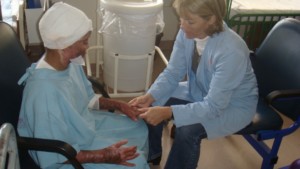
A young burn victim receiving an ‘M’ Technique treatment with 1% essential oils at the Red Cross War Memorial Children’s Hospital in Cape Town, South Africa. Image courtesy of Linda-Anne O’Flaherty.
Topical application
The application of properly diluted essential oils on the skin is practiced in some hospital settings, primarily inpatient hospice or palliative care units, and is administered chiefly by licensed massage therapists or nurses/volunteers trained in Buckle’s “M” technique. The advantages of massage therapy are stress and anxiety reduction, pain relief, lessening of edema (swelling), helping maintain skin integrity, and improved muscle tone and joint mobility. Disadvantages are that full-body massage may be limited by time or the patient’s physical constraints or condition.
Hospital settings where aromatherapy is used
Professional hospital aromatherapy practitioners in the United States and several countries (Australia, UK, France) were polled asking for the most common sites where aromatherapy is employed in their facilities. The most frequent mentions were, in no specific order:
- Hospice/palliative care
- Perioperative areas
- Labor and delivery units
- NICU
- Pediatrics
- Medical-surgical floors
- Psychiatric/addiction services
- Intensive care units/Emergency Departments
- Outpatient centers: cardiac rehab/sleep centers/cancer care/other outpatient units
- Wound care centers (inpatient and outpatient)
One area of practice mentioned by all of the polled aromatherapists was in palliative care or hospice units. Seriously ill and dying patients benefit from therapies designed to soothe anxiety, relieve dry/painful mouth, ease labored respiration, and aid in relieving wound odors.
Another routine area of aromatherapy practice is the perioperative setting (either before or after surgery). Patients going to surgery often suffer significant anxiety. An offer of a personal inhaler or aroma patch containing soothing oils can help reduce heart rate, blood pressure, and respiratory rate as well as anxiety prior to the procedure. Anesthesia used during surgical procedures often results in post-operative nausea and vomiting. Patients who are still sedated and unable to hold a personal inhaler can benefit from the use of essential oils via an aroma patch, or staff can hold a personal inhaler to the patient’s nose in order to help quell nausea and subsequent vomiting.
Increasingly, expectant mothers are requesting the use of essential oils during the labor process in order to alter the perception of pain, soothe anxiety, and sometimes even to attempt hastening a stalled labor. Post-delivery, mothers benefit from the application of soothing hydrosols or essential oils applied to cooled pads placed over the perineal area.
A fairly new addition to the hospital aromatherapy setting is the use of aroma patches in the neonatal intensive care unit (NICU). Most professional aromatherapists prefer to avoid the use of essential oils around newborns, and would likely feel even more strongly about a suggestion to use aromatherapy in the extremely fragile NICU population.
However, a study from the University of Kentucky demonstrated positive results with the use of aroma patches to help relieve the suffering of addicted babies due to prenatal maternal opiate use. Infants affected with Neonatal Abstinence Syndrome (NAS) display muscle tremors, irritability, poor feeding, and restlessness, and this often results in a prolonged hospital stay for affected babies. Infants in the trial were randomized into two groups and received either standard care for NAS including replacement narcotics, low lighting, soothing music and occupational therapy visits, or they received the standard care plus aromatherapy.
Babies in the aroma patch treatment group shortened their NICU stay by an average of 6.4 days as compared to infants not receiving the aromatherapy treatment. In addition, babies receiving aromatherapy required smaller doses of traditional medications than infants who had only standard care. Both resulted in significant cost savings to the hospital.
Pediatric units are another relatively new area of aromatherapy utilization in the hospital. Children also suffer anxiety and fear during hospitalizations, and aromatherapy (sometimes with the use of guided imagery) is useful in reducing symptoms. Specific cautions must be employed, as children sometimes lack the manual dexterity to hold a personal inhaler; also, cognitive and developmental concerns mean that children sometimes will attempt to dismantle a personal inhaler or pull off an aroma patch. Aromatherapy should be carried out only with parental or guardian consent, and preferably with parent or guardian present in the room.
Patients on medical-surgical floors benefit from aromatherapy used to soothe anxiety and stress related to their hospitalization, alleviate wound odors, and alter the perception of pain.
Interestingly, the use of aromatherapy in psychiatric and mental health care resulted not only in stress and anxiety reduction, but also helped encourage discussion in individual and group therapy. In an unpublished study, an aromatherapy practitioner employed personal inhalers with varying oil scents during therapy sessions. Patients who previously presented with a lack of participation in therapeutic discussions would respond emotionally to the scent of the inhalers. Some patients responded positively, with statements like “this reminds me of when I was a boy in my Grandma’s kitchen, when she was baking”. Others responded negatively as the scent(s) reminded them of unpleasant memories, but overall, the inhalers spurred group discussion, even in normally reticent individuals.
In other psychiatric settings, patients undergoing active withdrawal from alcohol or drugs suffer tremulousness, nausea/vomiting, chills, restlessness, and anxiety. As an adjunct to prescribed medications, aromatherapy can help mitigate or alter the perception of some of these symptoms.
Patients in intensive care units (ICU) are often on ventilatory support and require heavy sedation, and this population is notoriously restless and anxious. Aromatherapy, sometimes combined with hand or foot massage, has proven beneficial in soothing restlessness and sleeplessness.The importance of single-patient use essential oil bottles has already been emphasized.
The use of essential oils in Emergency Departments is somewhat limited by the uncontrolled nature of the setting. Many patients are medically unstable and the need for rapid and sometimes life-saving interventions precludes many opportunities to use aromatherapy. However, at least one study exists which examined the effect of inhaling lavender “essence” in pre-school children prior to intravenous (IV) catheter insertion. Results demonstrated that the group of children inhaling the lavender essence showed a statistically significant decrease in mean pain severity immediately and ten minutes post-catheter insertion. Other studies discuss the effects of lavender oil inhalation prior to IV catheter insertion in pre-operative and hemodialysis patients.
Aromatherapy applications exist in the hospital outpatient setting as well. A concern commonly experienced by patients after a cardiac event is sleep disturbances. Epidemiological studies have shown that over time, interrupted sleep patterns lead to poor outcomes in cardiac patients. Following a cardiac event such as heart bypass surgery or a myocardial infarction, patients are often referred to a program of controlled, monitored exercise designed to maximize heart function.
One cardiac rehabilitation program in Texas which employs aromatherapy studied sleep patterns of forty-two patients in a washout study. The patients inhaled either an essential oil blend containing Lavandula x intermedia, Citrus bergamia, and Cananga odorata or an aromatic placebo (unspecified) for five nights. After a one week ‘washout’ period where no aromatics were used, patients switched to the opposite aromatic preparation, again for five nights. After each intervention, patients completed a sleep quality survey, the Pittsburgh Sleep Quality Index (PSQI) to track results. Those patients using essential oils had overall better quality of sleep as compared to when they used the aromatic placebo, and their PSQI scores were lower, indicating better sleep quality.
Direct application to skin with diluted essential oils in either inpatient or outpatient wound care settings is not commonly seen in the United States, except when used as a distraction away from wound odors. Aromatherapeutic application in wound care is sometimes employed overseas, but the majority of literature pertaining to the use of essential oils on wounds describes in-vitro studies.
Hospital aromatherapy outside the United States
Australia
Much like in the U.S., aromatherapy practice guidelines vary from hospital to hospital; however, some facilities specify that aromatherapy products must be listed or registered with the Therapeutics Goods Administration (TGA, much like the U.S. Food and Drug Administration) if they are to be used in the hospital setting.
Gabrielle Richardson, President of Australia’s International Aromatherapy and Aromatic Medicine Association (IAAMA), commented that doctors and nurses may prescribe and administer aromatherapy treatments as long as they have completed some formal aromatherapy training and are following the guidelines of that particular hospital. Aromatherapists are able to provide treatments if they have accreditation with the hospital.
Australia has a professional association specifically for aromatherapists (IAAMA) which registers aromatherapists, enabling them to apply for accreditation in medical facilities including hospitals.
However, Australia does not currently license aromatherapists; instead they have a code of conduct that applies to all unregistered or registered health professionals who operate outside their scope of practice. In an interview with Richardson, she stated:
“Diffusion is the most common mode of delivery as it is very widely used in delivery wards and palliative care. It may also be used to distract patients during wound care.” “Essential oils in a carrier are also used topically for pressure area care . The formulation must be made up by the pharmacy within the hospital and applied by nursing staff as per guidelines.”
“Essential oils are not administered orally in hospitals (unless the patient brings them from home and continues to self treat while in hospital as described above)”.
France
French Aromatherapist professional Wendy Belcour shares: “When a unit wants to use essential oils, there are many stages to progress through. The head of service has to agree, as does the pharmacist, then the infection control (hospital and regional), the fire safety, medicines commission, quality control, etc…it is sometimes easier to integrate oils into smaller clinics than into the big general hospitals. The bigger the hospitals, the more loopholes you have to jump through.” This is similar to the U.S. process of aromatherapy program development.
Belcour acknowledges that many people outside of France consider “French” aromatherapy to include internal use of essential oils, but she adds a caveat: “It is true that the French use oils internally more frequently than the English, for example….owever, this route is reserved for the medical profession as basically, if you need to use oils internally, it’s because you are medically ill. …If you are not a doctor, you cannot prescribe medication, natural or otherwise. So as an aromatherapist in France, I cannot prescribe oils internally (capsules, suppositories, etc), as I am not a doctor.”
A 177-page white paper was published in 2018, outlining protocols for introducing aromatherapy to hospitals in France. This is the most comprehensive outline of aromatherapy in clinical settings proposed in any country.
United Kingdom
Professional Aromatherapist and lecturer Rhiannon Lewis states that the main advances in hospital care in the United Kingdom have been in cancer care, and that there is also significant work being done in hospice. Aromatherapy practice is also provided in elderly residential care settings, along with some newer advances in maternity care.
Future challenges and considerations
In both the U.S. and other countries, cost considerations, including who pays for essential oils and supplies, are the main challenge faced by hospital-based aromatherapy programs.
Medical insurance does not cover the cost of most complementary therapies in hospitals in the U.S., nor does it in France or the UK. Richardson reports that in Australia, if a person has public health insurance coverage and is a patient in a public hospital, essential oil treatments may be covered by Australian government health coverage. Private patients pay for their own treatment, which may be subsidized by private insurance and/or partially by the government through Medicare.
Further, the vast majority of hospitals have no budget for aromatherapy. The cost of essential oils, other needed supplies, and paying staff are major roadblocks which prevent programs from offering complementary health services. Many hospitals in the U.S. and overseas rely on public or private grants in order to fund their aromatherapy programs.
An increasingly common challenge in hospitals is the unauthorized use of aromatherapy. Patients who are accustomed to using essential oils at home often ask family members to bring their oils into the hospital. While this is the patient’s prerogative, their preferred use of essential oils may not follow established safety guidelines (e.g., placing lemon essential oil in drinking water or applying undiluted essential oils on the skin).
Patients often express very real concerns about contracting a hospital-acquired infection. Accordingly, they may choose to utilize powerful antimicrobial oil blends which are respiratory irritants or which have the capacity to act as blood-thinning agents. If an antimicrobial blend is diffused in a hospital room, it can irritate respiratory passages and cause cough, wheezing, or mucous membrane irritation in the patient or anyone else present in the room.
When untrained hospital staff employ aromatherapy, especially if the staff sells essential oils, this may result in ethical and safety concerns. While in hospital, patients rely on staff to act in the best interests of patients and to keep their personal safety as the highest priority. If hospitals do not have a formal aromatherapy program and someone suffers an adverse reaction to unauthorized essential oil use, time is often lost figuring out the next step in treating the exposure. Hospitals lacking a formal aromatherapy program will not have SDS sheets for the oils available; if, for example, the previously mentioned ‘germ-fighting’ blend causes a reaction, there may be no information readily available to help reverse it.
Anecdotal instances of oil ingestion or spills caused by visiting children or family members have been reported. If a child touches his hands to an open bottle of peppermint oil and then rubs his eyes, will untrained staff know how to address the stinging and burning? A hospital with a formalized training program will not only have SDS sheets available which help identify rescue measures, but trained hospital staff will have posted signage in the room stating that essential oils are being used, and to exercise appropriate caution.
The future of hospital-based aromatherapy programs will unfortunately continue to be driven by financial considerations. As long as insurance reimbursement to hospitals remains tied in part to patient satisfaction scores, it is likely that aromatherapy programs will continue for the foreseeable future. However, aromatherapists have long been aware of the benefits that essential oils provide in clinical applications whether the effects are physical, emotional, or both.
Acknowledgements
The author wishes to acknowledge the invaluable assistance of the following individuals who shared their expertise
Donna Audia RN, HN-BC, Integrative Care Team Lead, University of Maryland Medical Center, Maryland, USA
Wendy Belcour, Directrice, Ecole Internationale de Santé Bien-Être, Drémil-Lafage, France
Michelle Cohen MA, LMT, CPMT, In-house Registered Aromatherapist, University of Maryland Medical Center, Maryland, USA
Lynn Crawford BSN, CCAP, Wisconsin, USA
Kathleen Duffy LPN, MH, CCAP-I, RJ Buckle Associates, Massachusetts, USA
Jennifer Jeffers BS, LMT, Integrative Therapy Supervisor, Wentworth-Douglass Hospital, New Hampshire, USA
Rhiannon Lewis, Director, Essential Oil Research Consultants, La Martre, France
Gabrielle Richardson President, International Aromatherapy & Aromatic Medicine Association, Queensland, Australia
Deb Rodriguez, ANP-BC, PNP-BC, CCAP, CH, Nurse Practitioner in Cardiology and Family Practice, St. Clare Hospital, Wisconsin
Carol Scheidel, BSN, RN, CCAP, RJ Buckle Associates, Texas, USA
Sources
- Monroe, R. How essential oils became the cure for our age of anxiety. https://www.newyorker.com/magazine/2017/10/09/how-essential-oils-became-the-cure-for- our-age-of-anxiety. Accessed December 15, 2018.
- 5 delightful and work-enhancing essential oils for the office. American College of Healthcare Sciences website. http://info.achs.edu/blog/best-essential-oils-for-the-office. Accessed Dec. 15, 2018.
- National Institutes of Health’s Center for Complementary and Integrative Health. Americans spent $30.2 billion out-of-pocket on complementary health approaches. https://nccih.nih.gov/news/press/cost-spending-06222016. Accessed December 15, 2018.
- How to help reduce your patient’s anxiety. Nurse.com website. https://www.nurse.com/blog/2016/11/11/how-nurses-can-help-reduce-their-patients-anxiety/. Accessed December 15, 2018.
- CAHPS: Patients’ perspectives of care survey. Centers for Medicare and Medicaid Services. https://www.cms.gov/Medicare/Quality-Initiatives-Patient-Assessment-instruments/hospitalqualityinits/hospitaHCAHPS.html. Accessed December 16, 2018.
- Hospitals add alternative medicine. WebMD website. https://www.webmd.com/balance/news/20060720/hospitals-add-alternative-medicine. Accessed December 19, 2018.
- RJ Buckle and Associates website. https://www.rjbuckle.com/ Accessed January 17, 2019.
- Healthcare-associated infections. Centers for Disease Control website. https://www.cdc.gov/hai/, accessed January 2, 2019.
- Tisserand, R. Resistance is futile. Tisserand Institute website. https://tisserandinstitute.org/resistance-is-futile/ Accessed February 6, 2019.
- Mayr A, Hinterberger G, Lorenz IH et al. Nosocomial outbreak of extensively drug-resistant Pseudomonas aeruginosa associated with aromatherapy. American Journal of Infection Control. 2017 Apr 1;45(4):453-455. Accessed January 16, 2019.
- Hazard communication standard: safety data sheets. Occupational Safety and Health Administration website. https://www.osha.gov/Publications/OSHA3514.html Accessed January 12, 2019.
- Gill T. Compliance challenges for aromatherapy in the healthcare setting. International Journal of Professional Holistic Aromatherapy 2017; 6(2):36-38.
- American Nurses Association. Scope of practice. https://www.nursingworld.org/practice-policy/ Accessed January 13, 2019.
- Allard, M. E., & Katseres, J. (2018). Using essential oils to enhance nursing practice and for self-care. The Nurse Practitioner, 43(5),39–46.
- Lippincott Solutions. Nursing care plans: not a waste of time. http://lippincottsolutions.lww.com/blog.entry.html/2014/08/12/nursing_care_plans-J2v6.html Accessed January 13, 2019.
- Johnson J, Rivard R, Griffin K et al. The effectiveness of nurse-delivered aromatherapy in an acute care setting. Complementary Therapies in Medicine 2016; 25:164-169.
- Q&A: OSHA and fragrances in the workplace. OSHA Healthcare Connection. http://www.hcpro.com/SAF-227316-3487/QA-OSHA-and-fragrances-in-the-workplace.html, accessed January 5, 2019.
- Is fragrance sensitivity a disability under the ADA? ADA National Network website, https://adata.org/content/fragrance-sensitivity-disability-under-ada. Accessed January 10, 2019.
- Shubin A. When one person’s scent is another person’s disability. http://www.mondaq.com/unitedstates/x/609474/, accessed January 5, 2019.
- Tisserand R. Irritant and allergic reactions to essential oils. Tisserand Institute website, https://tisserandinstitute.org/safety/irritation-allergic-reactions/ Accessed December 5, 2018.
- Essential oil and aromatherapy inhalation patches guide. Aromaweb.com. https://www.aromaweb.com/articles/essential-oil-inhalation-patches.asp. Accessed December 16th, 2018.
- Wilkinson, S. Aromatherapy and massage in palliative care. International Journal of Palliative Nursing 1995; 1(1),21–30.
- Liu Q, Ning X, Wang L et al. Individualized aromatherapy in end-of-life cancer patients care: a case report. Chinese Medical Science Journal 2018; 33(4): 234-239.
- R. J. Buckle Associates “M’ technique. https://www.rjbuckle.com/m-technique.html. Accessed February 6, 2019.
- Kerkhoff-Knapp Hayes M. Complementary Nursing in End of Life Care-Integrative Care in Palliative Care. 2015. Wernhout, NL: Kicozo.
- Stallings-Welden L. M., Doerner M., Ketchem E et al. A comparison of aromatherapy to standard care for relief of PONV and PDNV in ambulatory surgical patients. Journal of PeriAnesthesia Nursing 2018; 33(2),116–128.
- Karaman S, Karaman T, Tapar H et al. A randomized placebo-controlled study of aromatherapy for the treatment of postoperative nausea and vomiting. Complementary Therapies in Medicine 2019 Feb; 42:417-421.
- Woltman M, Levinger, MD, Leung L et al. Efficacy of lavender aromatherapy in reducing preoperative anxiety in ambulatory surgery patients undergoing procedures in general otolaryngology. Laryngoscope Investigative Otolaryngology. 2017,Wiley Periodicals Inc.
- Kaviani M, Maghbool S, Azima S et al. Comparison of the effect of aromatherapy with Jasminum officinale and Salvia officinale on pain severity and labor outcome in nulliparous women. Iranian Journal of Nurse Midwifery Research 2014 Nov-Dec; 19(6): 666-672.
- Namazi M, Ali Akbari S, Mojab F et al. Effects of Citrus aurantium (bitter orange) on the severity of first stage labor pain. Iranian Journal of Pharmaceutical Research 2014; 13(3): 1011-1018.
- Pace S. Addicted from birth. Tisserand Institute website. https://tisserandinstitute.org/addicted-from-birth/, accessed January 2, 2019.
- Duffy K. .
- Neto G, Braga J, Alves M et al. Anxiolytic effect of Citrus aurantium L. in crack users. Evidence-Based Complementary and Alternative Medicine 2017(2): 1-8.
- Karadag, E, Baglama S, Ozden D et al. Effects of aromatherapy on sleep quality and anxiety of patients. Nursing in Critical Care 2017 March; 22(2): 105-112.
- Bikmoradi A, Khaleghverdi M, Seddighi I et al. Effect of inhalation aromatherapy with lavender essence on pain associated with intravenous catheter insertion in preschool children: a quasi-experimental study. Complementary Therapies in Clinical Practice 2017 Aug; 28:85-91.
- Kim S, Kim H-J, Yeo J-S et al. The effect of lavender oil on stress, bispectral index values, and needle insertion pain in volunteers. Journal of Alternative and Complementary Medicine. 2011;17(9):823–826.
- Bagheri-Nesami M, Espahbodi F, Nikkhah A et al. The effects of lavender aromatherapy on pain following needle insertion into a fistula in hemodialysis patients. Complementary Therapies in Clinical Practice 2014 Feb; 20(1):1-4.
- Khan MS and Aouad R. The Effects of insomnia and sleep loss on cardiovascular disease. Sleep Medicine Clinician 2017 June;12(2):167-177.
- Jackson CL, Redline S, and Emmons KM. Sleep as a potential fundamental contributor to disparities in cardiovascular health. Annual Review of Public Health. 2015 Mar 18;36:417-40.
- Texas Health Resources. Nurse’s study on essential oils helps cardiac rehab patients improve sleep quality. https://www.texashealth.org/news/nurses-study-on-essential-oils-helps-cardiac-rehab-patients-improve-sleep-quality. Accessed January 3, 2019.
- Woollard AC, Tatham KC and Barker S. The influence of essential oils on the process of wound healing: a review of the current evidence. Journal of Wound Care 2007; 16(6), 255–257.
- Warnke PH, Becker ST, Podschun R et al. The battle against multi-resistant strains: Renaissance of antimicrobial essential oils as a promising force to fight hospital-acquired infections. Journal of Cranio-Maxillofacial Surgery 2009; 37(7), 392–397.
- Richardson G.
- Belcour W.
- Lewis R.




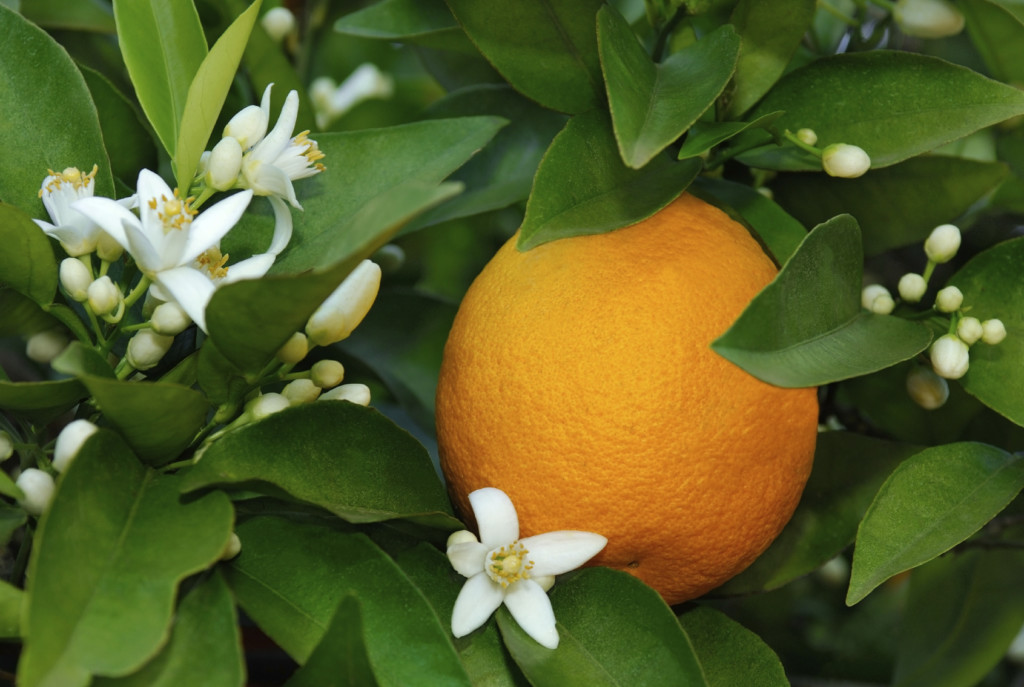

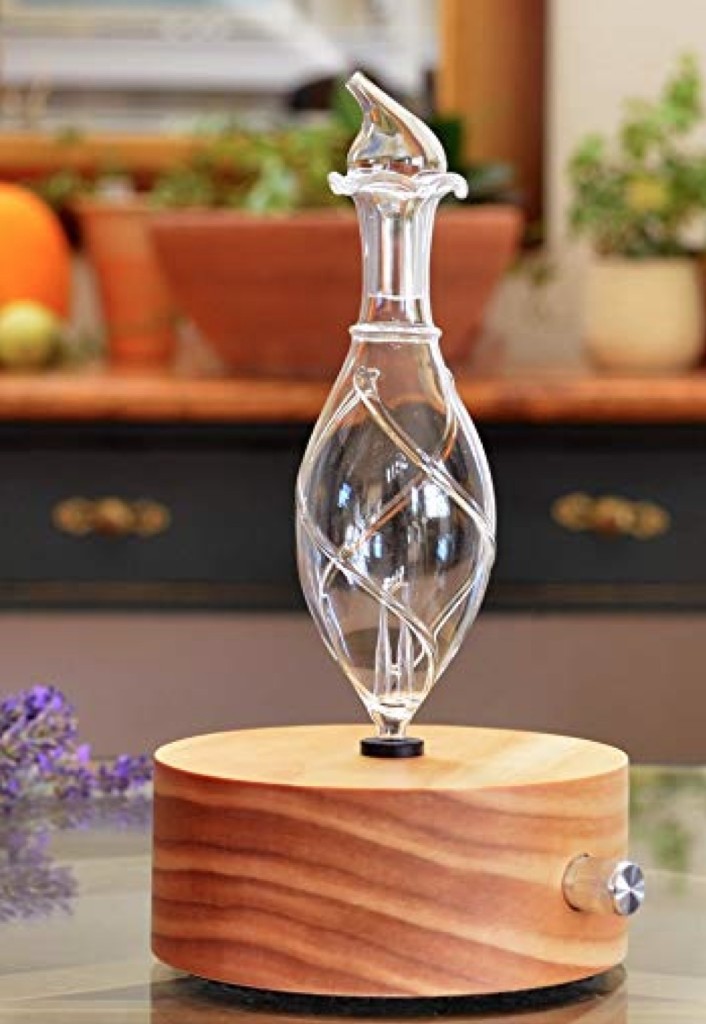



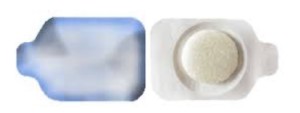
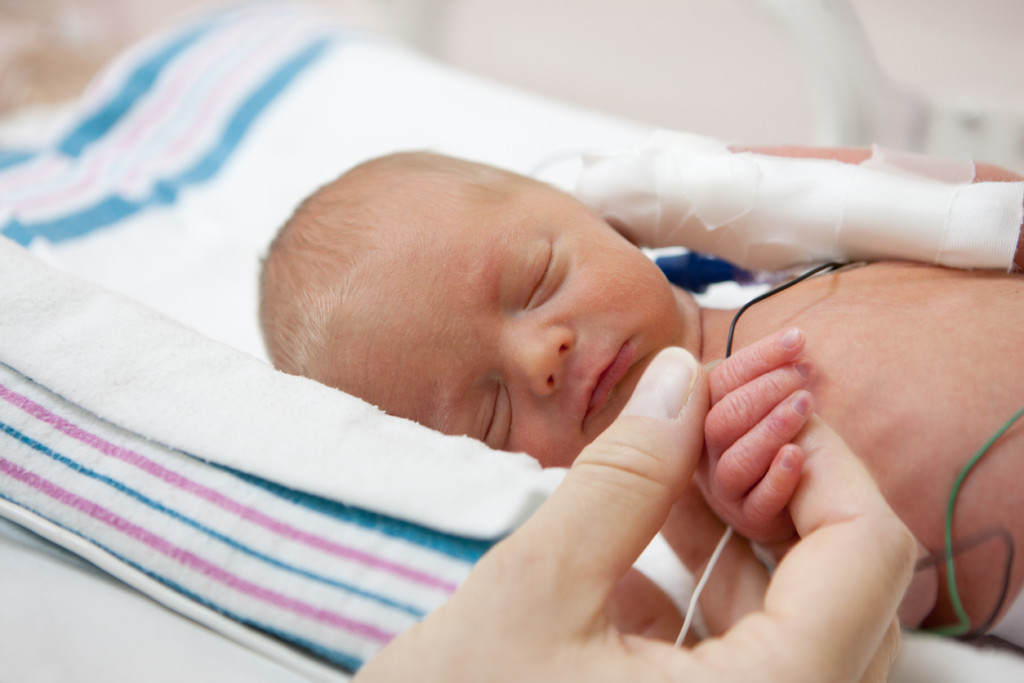
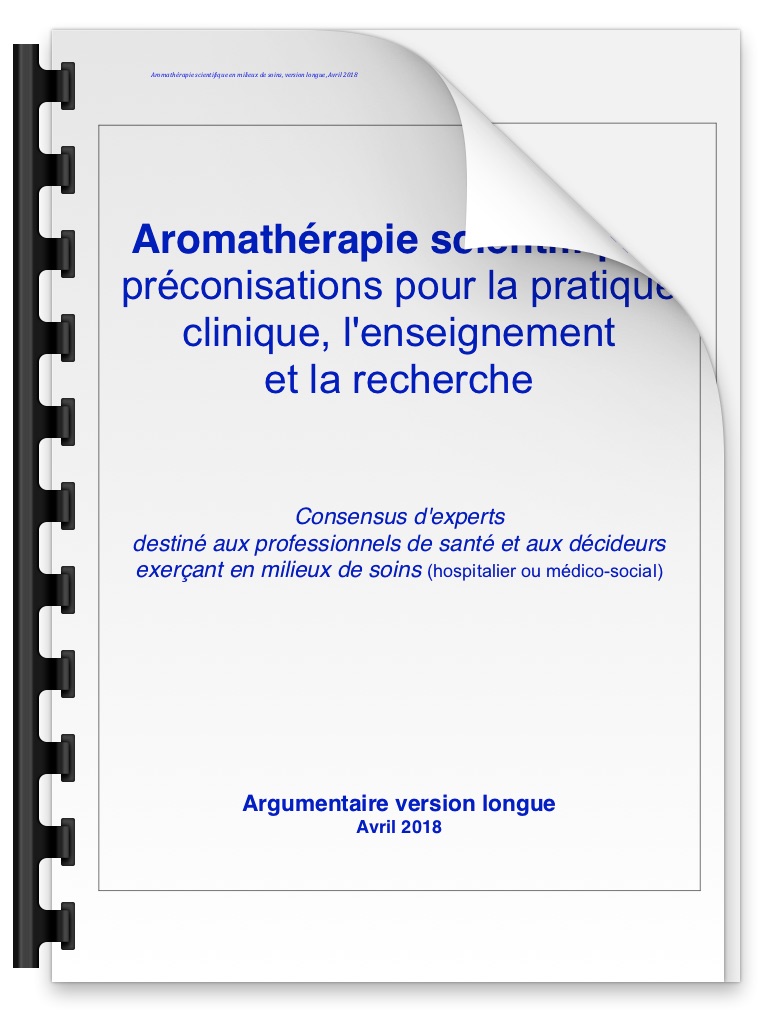
Great article! Thanks.
Thank you, Janine!
As someone who is allergic to many essential oils and some of them it takes such a small dose to create a problem, this is disturbing to me. I can see the use of the personal inhaler and such but not diffusers for whole departments. You did mention in the article people developing Multiple Chemical Sensitivities. These people react with such negative and strong reactions that having a diffuser going in a department could be life threatening to them.
Rozetta, you bring up an excellent point. Multiple Chemical Sensitivity (MCS) is on the rise, and that’s precisely why most hospitals have adopted fragrance-free policies (though the actual implementation is not as easy as it sounds, as you probably already know). This is a very good reason to severely limit or completely remove the use of open-air diffusers. We strongly prefer that programs limit themselves to personal inhalers of one design or another, which effectively eliminates broadcast diffusion. I work with several colleagues with MCS and they fight a daily battle to stay healthy in the workplace. Thank you for your comment!
Sue, Thank you for this article as it is quite timely. I am looking to add aromatherapy to our outpatient cancer center as complementary therapy. Any suggestions other than mentioned in the article? Thank you again this is helping me put my proposal together.
The only thing you really need besides the suggestions in the article is…..patience. 🙂
For a formalized aromatherapy program to be approved, it’s likely you will be moving through a multitude of steps and at least several committees, which can take months. Good luck!
Great comprehensive article on a topic that needed attention! Thank you.
Thank you, Barbara!
I thank you so much for creating such a great resource.
Thank you, Lara!
Very informative article thank you. I too am a nurse, with an interest in aromatherapy. You bring up a number of points for consideration both within and outside of the hospital setting. With the proliferation of essential oils availability in stores, and via direct sales marketing, and online, the possible risks for harm seems concerning. Expiration of product, synthetics, diffusing or using scent around people with sensitivities is a real concern. Accidental ingestion, eye/skin irritation, allergy, interaction with prescribed medications…makes me as an oil user/sharer a little nervous! As the products cannot be patented, it seems prudent that all users/practitioners continue to educate and inform themselves and the general public. Reliable resources are also a concern. Who to trust? I can understand the hesitancy of hospitals, nursing homes, schools and daycare to engage in activity that may bring liability concerns.
Thanks for this education piece!
Thanks, Betty!
I am thankful for this very comprehensive article.
Thank you, Kay!
Great article – thanks for sharing your expertise!
Thank you, Fran!
I did have a comment about this being used not only in a public place but also in a workplace. I believe that the workers have the right to know what they are being asked to use in the form of having Safety Data Sheets available for each item they are being required to expose themselves to. I believe there could be some benefits to the use for patients and I agree that personal inhalers would be best. I know someone who is very allergic to peppermint, even to others having gum or mints in his presence, so even though these oils are natural that doesn’t mean allergy free.
I agree 100% with your comments, Lynn.
Hi Sue, what a wonderful and extensive article. I am an RN, MSN and have just enrolled in the Aromahead Institute Certification Program so am just in awe of all the information I am pulling together for when I have to do case studies and papers. I have saved so much to my OneNote so I have it ready to go. I am amazed at your qualifications in Aromatherapy, what an asset you are for our patients, families and friends with all the knowledge you have and share. I so agree with your comment about patients being a diagnosis, so very true. I am also going to check out your new venture,Thank you so much!
Hi Jan, thank you for your very kind words, you made my day! 😊